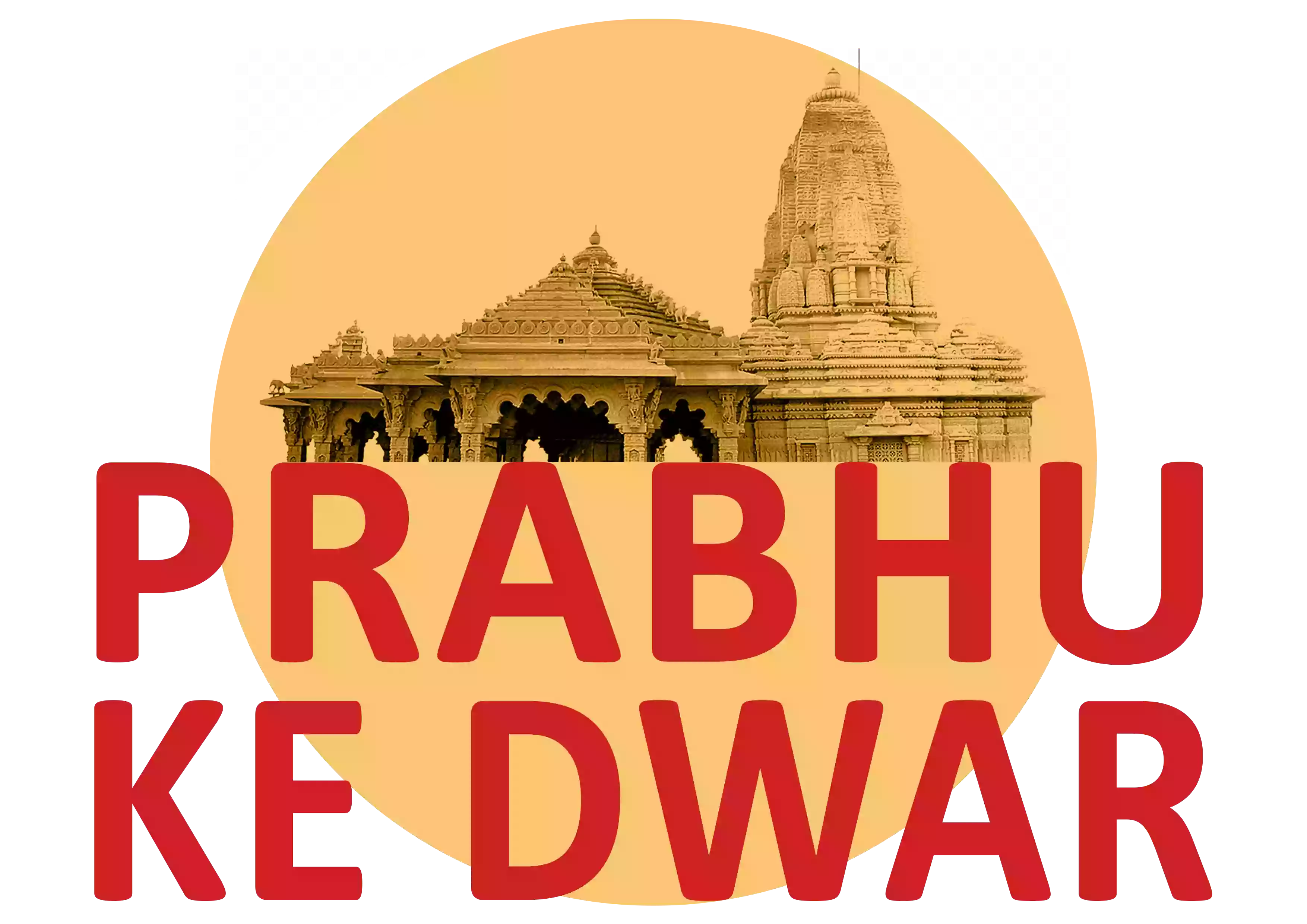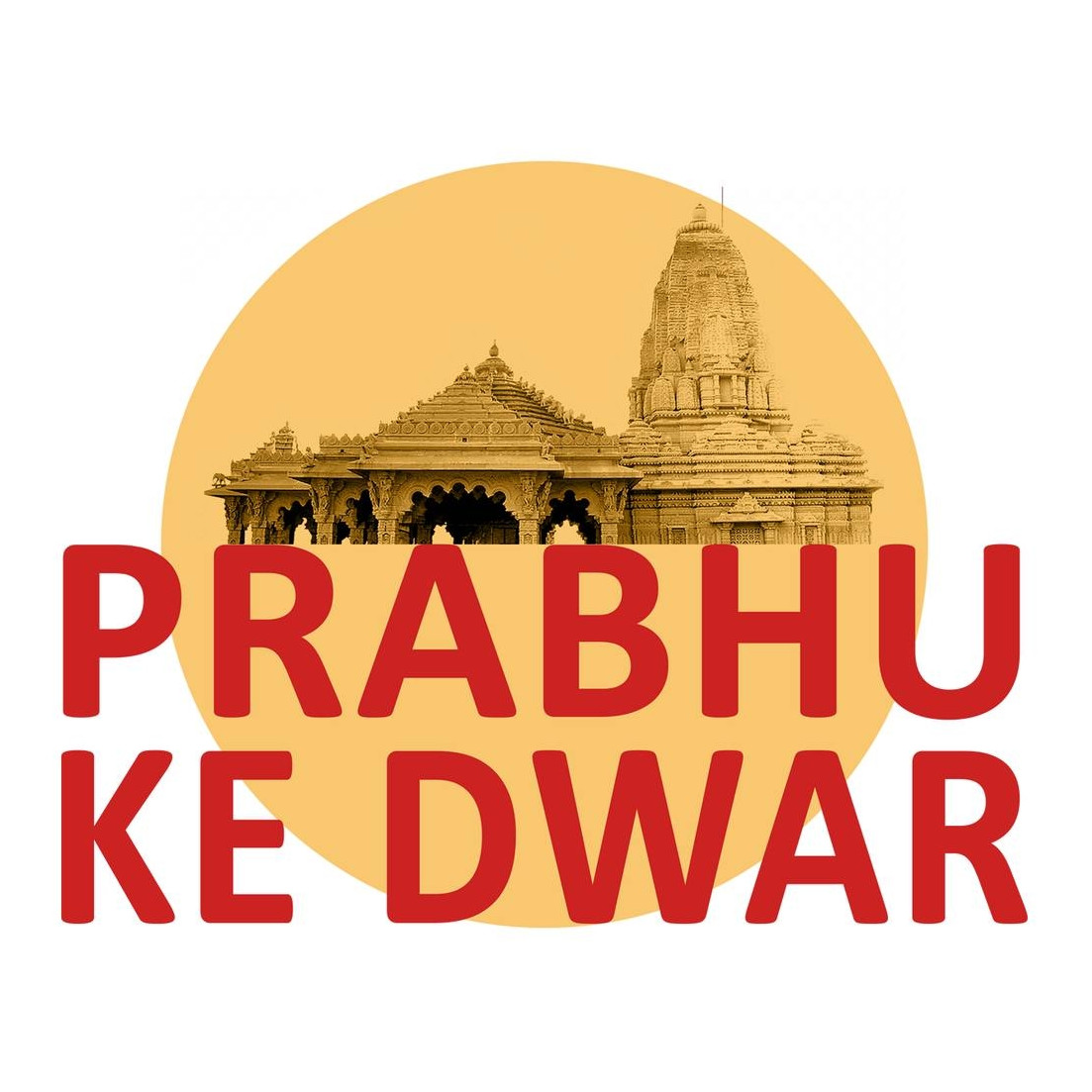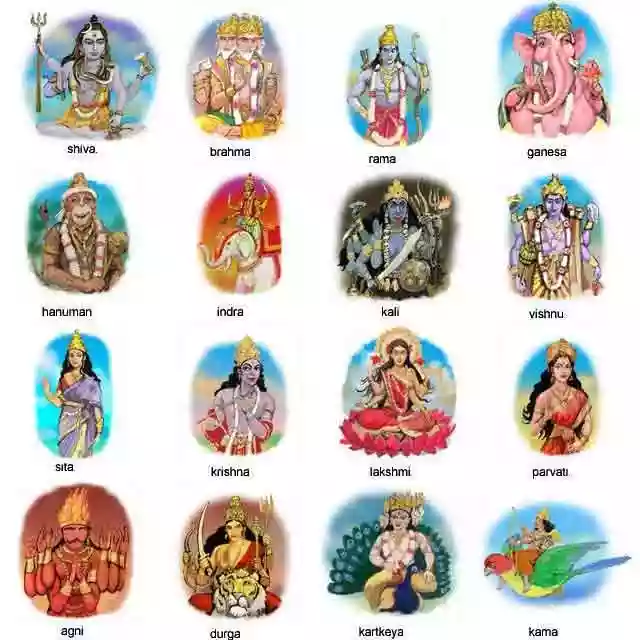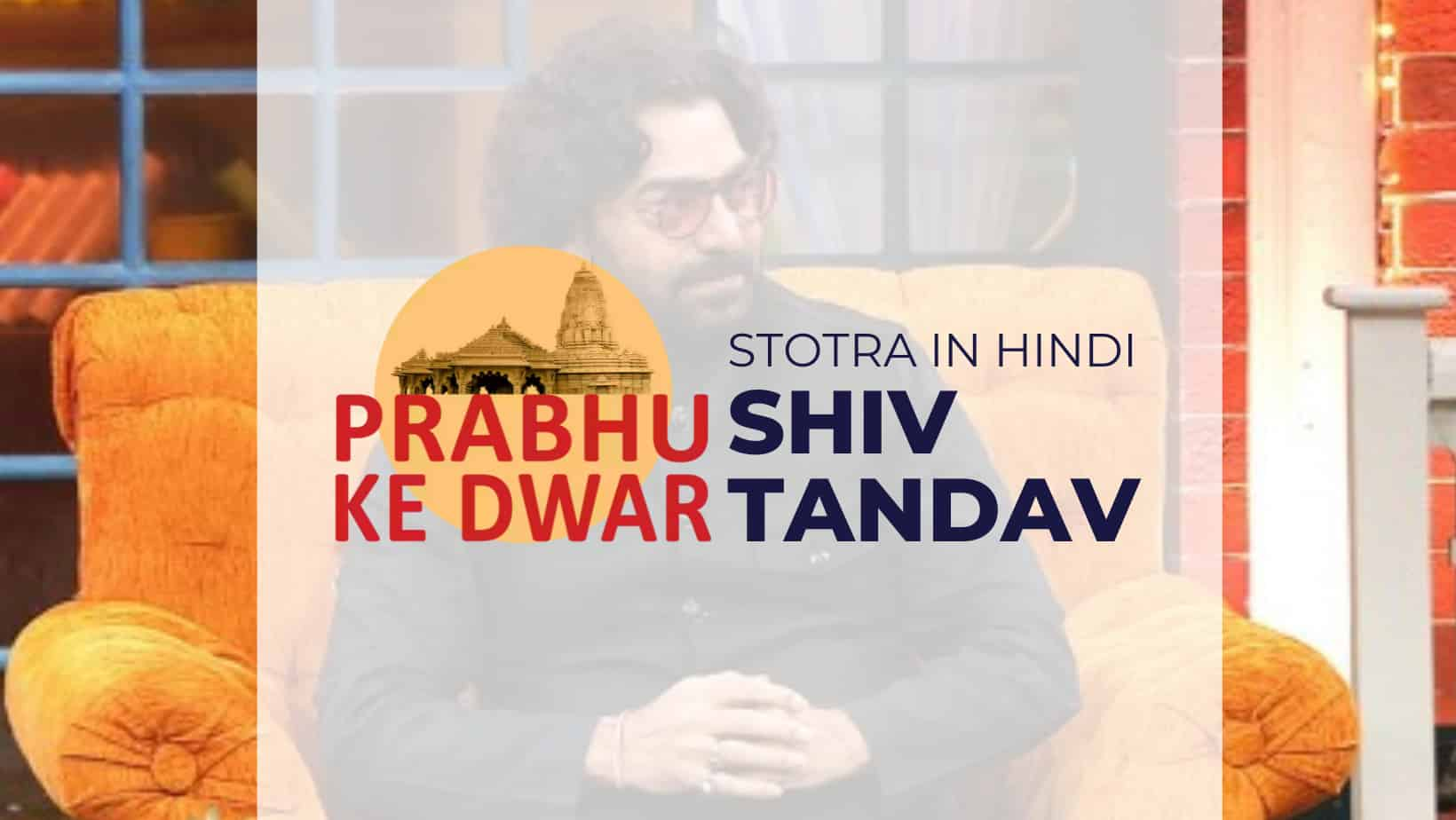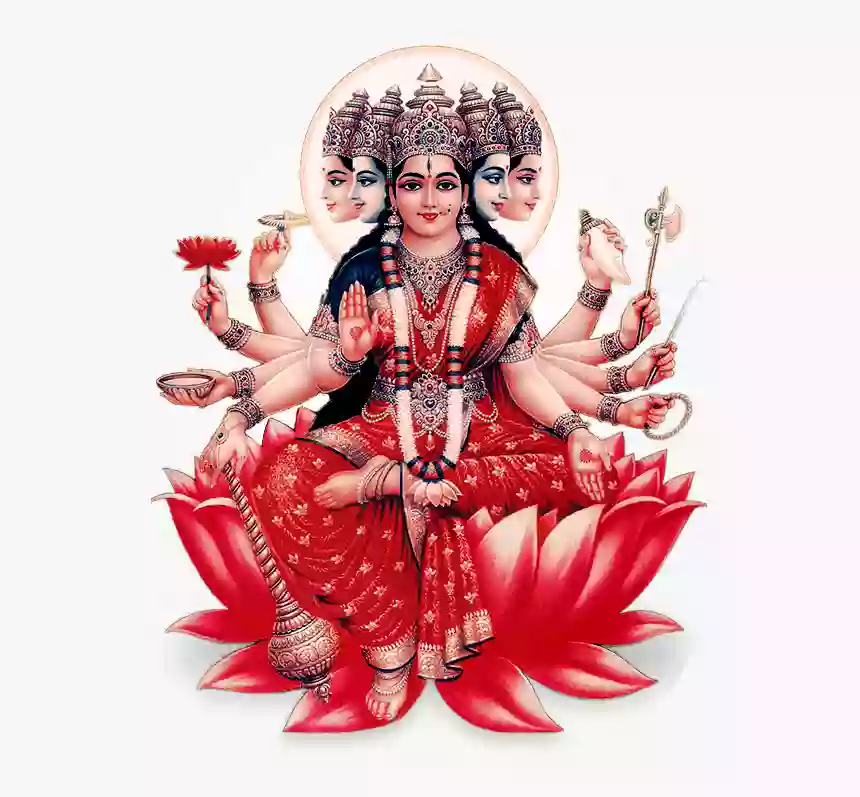Hinduism, one of the oldest and most diverse religions in the world, encompasses a vast tapestry of beliefs, deities, rituals, and philosophical concepts. With a rich history dating back thousands of years, Hinduism has evolved and flourished within the Indian subcontinent, shaping the lives of millions of adherents and leaving an indelible mark on the country's culture and identity. In this exploration of Hinduism, we will embark on a journey to unravel its intricacies and understand its profound influence on Indian civilization.
Chapter by chapter, we will delve into the various aspects of Hinduism, beginning with an introduction that provides a historical context for this ancient religion. We will then proceed to explore the core beliefs and philosophical concepts that form the foundation of Hindu thought. From the principles of dharma (moral duty), karma (cause and effect), and moksha (liberation from the cycle of birth and death), we will gain insights into the cyclical nature of life and the multiple paths to spiritual enlightenment embraced by Hindus.
Moving on, we will encounter the pantheon of Hindu deities, who play a central role in the religious and mythological narratives of the faith. We will learn about Brahma, the creator; Vishnu, the preserver; Shiva, the destroyer; and Devi, the divine feminine power, among many others. Exploring their characteristics, stories, and significance within Hinduism, we will witness the diverse expressions of devotion and worship that exist throughout the Hindu tradition.
Rituals and practices form an integral part of Hindu religious life, providing devotees with a tangible means of expressing their faith and connecting with the divine. From daily household worship (puja) to elaborate temple rituals and participation in religious ceremonies, we will discover the importance of rituals in fostering a sense of devotion, seeking blessings, and fostering a spiritual connection with the divine.
The sacred texts of Hinduism, known as the scriptures, offer profound insights into the religious and philosophical teachings of the faith. The Vedas, Upanishads, Bhagavad Gita, and Ramayana, among others, serve as guiding lights for Hindus, providing wisdom, moral guidance, and spiritual inspiration. We will explore the teachings of these revered texts and gain an understanding of their role in shaping Hindu religious practices and beliefs.
Hinduism is also known for its vibrant and colorful festivals and ceremonies that are celebrated with great fervor across India. From the joyous lights of Diwali to the exuberance of Holi and the devotional fervor of Navaratri and Durga Puja, we will immerse ourselves in the sights, sounds, and rituals of these significant occasions. We will explore the cultural, social, and spiritual significance behind these festivals, recognizing how they bring communities together and reinforce the bonds between individuals and their faith.
Finally, we will explore the profound influence of Hinduism on Indian culture. Through centuries of interaction, Hindu beliefs and traditions have permeated various aspects of Indian society, including art, architecture, music, dance, and literature. We will witness the enduring legacy of Hinduism in the intricate sculptures of ancient temples, the melodious rhythms of classical music, the graceful movements of traditional dances, and the timeless tales portrayed in literature.
By the end of this journey, readers will have gained a comprehensive understanding of Hinduism, its beliefs, deities, rituals, scriptures, festivals, and its profound influence on Indian culture. Join us as we unravel the mysteries and explore the rich tapestry of one of the world's most fascinating religions.
Chapter 1: Introduction to Hinduism
Hinduism, the world's third-largest religion, has a history that stretches back thousands of years. Rooted in the ancient civilization of the Indian subcontinent, it has grown into a diverse and complex religious tradition, encompassing a wide array of beliefs, practices, and philosophical concepts.
The origins of Hinduism can be traced back to the Indus Valley Civilization, which flourished around 2500 BCE in what is now modern-day Pakistan and northwest India. This civilization, known for its advanced urban planning and sophisticated trade networks, laid the foundation for the cultural and religious development of the region.
While the exact origins of Hinduism are shrouded in antiquity, the religion gradually evolved over centuries, absorbing and assimilating various religious and cultural elements. It is not based on the teachings of a single founder or the authority of a central religious institution. Instead, Hinduism is characterized by its diversity and pluralism, allowing for a multitude of beliefs and practices to coexist within its framework.
At its core, Hinduism revolves around the concept of dharma, which encompasses moral and ethical duties, righteousness, and the proper way of living. Dharma provides guidelines for individuals to lead a righteous life and fulfill their obligations to themselves, their families, society, and the divine.
Karma, another fundamental concept in Hinduism, is the law of cause and effect. It asserts that every action has consequences, both in this life and in future lives. The accumulation of karma determines the nature of one's rebirth and the experiences they will undergo in subsequent lives.
Central to the Hindu understanding of existence is the belief in samsara, the cycle of birth, death, and rebirth. According to this belief, individual souls (atman) are eternal and go through a series of reincarnations until they achieve moksha, liberation from the cycle of samsara. Moksha represents the ultimate spiritual goal of Hinduism, where the individual soul merges with the universal soul (Brahman).
Hinduism recognizes various paths (margas) to attain moksha, accommodating different temperaments and inclinations. The paths include karma yoga (the path of selfless action), bhakti yoga (the path of devotion), jnana yoga (the path of knowledge), and raja yoga (the path of meditation and control of the mind).
The diversity of Hindu beliefs and practices is reflected in the multitude of deities worshiped by Hindus. The Hindu pantheon consists of countless gods and goddesses, each with their own unique qualities and functions. The Trimurti, comprising Brahma the creator, Vishnu the preserver, and Shiva the destroyer, represents the divine aspects of creation, preservation, and dissolution.
Devotees also worship various forms of the divine feminine, known as Devi or the Goddess. Devi embodies both nurturing and fierce aspects, and she is revered as the source of energy, power, and creativity.
Hindu worship takes place in homes, temples, and sacred sites throughout the Indian subcontinent and beyond. Puja, the act of worship, involves offerings of flowers, incense, and food to the deities, accompanied by prayers, chants, and rituals.
In the next chapter, we will delve deeper into the world of Hindu deities, exploring their roles, characteristics, and significance within Hindu mythology and worship. We will uncover the fascinating stories and symbolism associated with these divine beings, shedding light on the vibrant tapestry of Hindu religious traditions.
Chapter 2: Deities in Hinduism
Hinduism is renowned for its rich pantheon of gods and goddesses, each with their own unique qualities, stories, and significance within the religion. The Hindu deities, often depicted in intricate sculptures, paintings, and myths, play a central role in the spiritual lives of millions of devotees.
One of the key aspects of Hinduism is the concept of polytheism, the belief in multiple deities. This polytheistic nature allows for a diverse range of divine beings to be revered and worshipped, catering to the various needs, desires, and spiritual paths of the followers.
The Trimurti, consisting of Brahma, Vishnu, and Shiva, represents the three major aspects of the divine in Hinduism. Brahma, the creator, is associated with the creation and birth of the universe. Vishnu, the preserver, is responsible for maintaining and protecting the world. Shiva, the destroyer, symbolizes the transformative aspects of existence, leading to rebirth and renewal.
In addition to the Trimurti, numerous other deities hold significant positions in Hindu mythology and worship. For instance, Devi, the divine feminine, is revered as the universal mother and the source of energy, power, and creativity. She takes on various forms such as Durga, Kali, Lakshmi, and Saraswati, each representing different aspects of the Goddess.
Ganesha, the elephant-headed deity, is highly revered as the remover of obstacles and the patron of wisdom and intellect. Lakshmi, the goddess of wealth and prosperity, is worshipped for blessings of abundance and good fortune. Saraswati, the goddess of knowledge, arts, and music, is revered by scholars, artists, and students seeking wisdom and creative inspiration.
Each deity in Hinduism has their own distinct mythology, symbols, and stories associated with them. These stories serve as a means to convey moral, ethical, and spiritual teachings to the devotees. They provide insights into the qualities and attributes of the deities, making them relatable and inspiring figures for the worshippers.
Hindu worship often involves the use of idols and images to represent the deities. These images are not seen as mere objects but as channels through which devotees can establish a personal connection with the divine. The idols are believed to be imbued with the presence and blessings of the deities, allowing worshippers to express their devotion and seek their guidance.
Temples dedicated to different deities are scattered throughout the Indian subcontinent, serving as focal points for religious practices and community gatherings. These temples are not only places of worship but also vibrant cultural centers, adorned with intricate carvings, colorful paintings, and sculptures depicting various episodes from Hindu mythology.
Pilgrimages to sacred sites associated with specific deities are also an integral part of Hindu religious practice. Devotees undertake these journeys as acts of devotion and seek spiritual purification and blessings. These sacred sites are believed to be imbued with divine energy and are considered auspicious for conducting rituals and seeking spiritual upliftment.
In the next chapter, we will shift our focus to the rituals and practices that form an integral part of Hindu religious life. We will explore the various ceremonies, daily observances, and sacraments that are followed by Hindus, shedding light on the ways in which devotees express their faith and seek spiritual connection with the divine.
Chapter 3: Rituals and Practices
Rituals and practices form an integral part of Hindu religious life, providing devotees with a tangible means to express their faith, devotion, and seek spiritual connection with the divine. These rituals encompass a wide range of activities, from daily observances to elaborate ceremonies and sacraments.
One of the fundamental aspects of Hindu ritual practice is the performance of puja, the act of worship. Puja can take place in various settings, including homes, temples, and sacred sites. It involves offering prayers, flowers, incense, and food to the deities while reciting sacred chants and mantras.
In Hindu households, puja is often conducted in a designated prayer room or area, where a shrine or altar is adorned with images or idols of the deities. The ritual may be performed by individuals or by the entire family, creating a sense of spiritual connection and unity.
Temple worship plays a significant role in Hinduism, providing devotees with a communal space to express their devotion and seek blessings. Temples are adorned with intricate carvings and sculptures, reflecting the artistic and architectural brilliance of the ancient and medieval periods.
Devotees visit temples to offer their prayers, make offerings, and participate in religious ceremonies conducted by priests. These ceremonies may include the chanting of sacred hymns, the lighting of lamps, the waving of incense, and the presentation of sacred food offerings.
Apart from puja and temple worship, Hindus also engage in various other practices to deepen their spiritual connection. These practices may include meditation, yoga, chanting of sacred mantras, and observance of specific vows and fasts. They are intended to purify the mind, cultivate inner stillness, and foster a sense of oneness with the divine.
Sacraments, known as samskaras, are important milestones in the lives of Hindus. These rituals mark significant life events such as birth, initiation, marriage, and death. Each samskara has its own set of rituals and prayers, guided by the belief that these ceremonies bring spiritual blessings, protection, and a sense of continuity in one's journey.
The rituals associated with the sacraments vary based on regional customs and traditions. For example, the sacrament of Namakarana, or naming ceremony, is performed a few weeks after the birth of a child. The priest conducts a ritual and whispers the chosen name into the baby's ear, symbolizing the awakening of the child's individual identity.
Another important samskara is the Upanayana, or sacred thread ceremony, which marks the initiation of a young boy into the study of the Vedas and his journey towards spiritual growth. During this ceremony, the boy receives a sacred thread, which he wears over his left shoulder, symbolizing his commitment to learning, discipline, and the pursuit of knowledge.
Marriage, or Vivaha, is considered a sacrament in Hinduism, signifying the union of two individuals and their families. The wedding ceremony is characterized by elaborate rituals, exchanges of vows, and the presence of a sacred fire, symbolizing the divine witness to the union. It is believed that marriage not only binds the couple in a lifelong commitment but also forms a sacred bond that extends beyond this lifetime.
The final samskara, known as Antyeshti or funeral rites, is performed upon the death of a Hindu individual. The rituals involve the cremation of the body, the chanting of prayers, and the immersion of the ashes in a sacred river or body of water. These rituals aim to provide a proper send-off for the departed soul, ensuring a smooth transition to the next stage of existence.
In addition to these major samskaras, Hindus also observe numerous other rituals and practices throughout the year. These include observing fasts on specific days, participating in pilgrimages to sacred sites, and engaging in acts of charity and selfless service.
The rituals and practices in Hinduism not only provide a means for individuals to connect with the divine but also serve as a reminder of the deeper spiritual truths and values that underpin the religion. They offer a structured framework for expressing gratitude, seeking guidance, and cultivating a sense of spiritual discipline and devotion.
In the next chapter, we will delve into the vast and diverse collection of Hindu scriptures, which form the foundation of religious teachings and philosophical insights in Hinduism. We will explore the significance of these sacred texts and how they shape the religious practices and beliefs of millions of Hindus worldwide.
Chapter 4: Hindu Scriptures
Hinduism boasts a rich and diverse collection of scriptures that hold immense importance in shaping the religious practices, beliefs, and philosophical outlook of its followers. These sacred texts are revered as repositories of divine knowledge and spiritual wisdom, offering guidance and insights into the nature of existence and the paths to spiritual realization.
The Vedas, considered the oldest scriptures in Hinduism, are a collection of ancient hymns, rituals, and chants that form the foundation of Hindu religious thought. Composed in Sanskrit, the Vedas are divided into four main texts: the Rigveda, the Yajurveda, the Samaveda, and the Atharvaveda. They contain hymns dedicated to various deities, explanations of rituals, and philosophical reflections on the nature of reality.
The Upanishads, which are philosophical treatises that explore the nature of the self (Atman) and ultimate reality (Brahman), are considered the culmination of Vedic thought. They delve into profound metaphysical and spiritual concepts, such as the identity of the individual soul with the universal consciousness, the nature of karma, and the paths to liberation (moksha).
The Bhagavad Gita, a revered text within the ancient Indian epic, the Mahabharata, holds a special place in Hindu scripture. It is a conversation between Prince Arjuna and Lord Krishna, who serves as his charioteer and spiritual guide. The Bhagavad Gita addresses the ethical and moral dilemmas faced by Arjuna on the battlefield and provides profound teachings on duty (dharma), devotion, and the nature of the self.
Another significant scripture is the Ramayana, an epic poem that narrates the adventures of Prince Rama in his quest to rescue his wife, Sita, from the demon king Ravana. The Ramayana offers timeless lessons on righteousness, loyalty, honor, and the triumph of good over evil. It is revered for its moral teachings and its depiction of ideal human qualities.
In addition to these primary texts, various Puranas and Itihasas, such as the Mahabharata and the Puranas, play a crucial role in Hindu religious literature. The Puranas provide mythological narratives, genealogies of gods and goddesses, and accounts of creation, while the Mahabharata encompasses not only the Bhagavad Gita but also intricate tales of heroes, gods, and their interplay with human lives.
Hindu scriptures are not limited to textual writings alone; they also encompass oral traditions and folk narratives that have been passed down through generations. These include the Panchatantra, a collection of moral stories and fables, and the Jataka tales, which recount the previous lives of the Buddha.
The study and contemplation of these scriptures are considered essential for spiritual growth and deepening one's understanding of Hindu philosophy. Scholars, teachers, and spiritual aspirants spend years delving into the depths of these texts, unraveling their hidden meanings and extracting profound insights.
Furthermore, commentaries and interpretations by various philosophers and spiritual masters have contributed to the rich tapestry of Hindu scripture. These commentaries provide deeper explanations, clarifications, and practical applications of the teachings found within the sacred texts.
The influence of Hindu scriptures extends beyond the realm of religious practice and philosophy. They have played a significant role in shaping various aspects of Indian culture, including literature, art, music, and dance. The narratives and characters found within these texts have inspired countless literary works, sculptures, paintings, and musical compositions throughout history.
In the next chapter, we will explore the vibrant tapestry of Hindu festivals and ceremonies. These joyous occasions bring communities together, foster a sense of shared identity, and provide opportunities for devotees to express their devotion, gratitude, and reverence to the divine. We will delve into the significance of major Hindu festivals, the rituals associated with them, and the cultural diversity they embody.
Chapter 5: Festivals and Ceremonies
Hinduism is known for its vibrant and diverse festivals and ceremonies, which serve as important occasions for devotees to come together, celebrate, and express their religious devotion. These festivals are deeply rooted in Hindu traditions and reflect the rich cultural tapestry of the religion.
One of the most widely celebrated festivals in Hinduism is Diwali, also known as the Festival of Lights. Diwali signifies the victory of light over darkness and good over evil. During this festival, homes and streets are adorned with colorful decorations and lit with rows of oil lamps. Fireworks light up the night sky, and families gather to exchange gifts and sweets. The festival holds different meanings across the various regions of India but is universally associated with the celebration of prosperity, knowledge, and the triumph of righteousness.
Holi, known as the Festival of Colors, is another prominent Hindu festival celebrated with great enthusiasm. It marks the arrival of spring and the triumph of good over evil. Participants engage in vibrant color play, throwing colored powders and water at each other. Music, dance, and feasting are also integral parts of the celebration. Holi is a time for people to come together, let go of differences, and embrace unity and joy.
Navaratri, meaning "nine nights," is a festival dedicated to the worship of the divine feminine energy. It is celebrated in various forms across different regions of India. During Navaratri, elaborate rituals and dance performances take place, honoring the goddess Durga and her various forms. The festival culminates in Durga Puja, a grand celebration where beautifully crafted idols of the goddess are worshipped and immersed in water.
Ganesh Chaturthi is a festival dedicated to Lord Ganesha, the elephant-headed deity known as the remover of obstacles. During this festival, devotees bring clay idols of Lord Ganesha into their homes or community spaces and offer prayers and offerings. The idols are later immersed in water, symbolizing the return of Lord Ganesha to his divine abode. The festival is celebrated with great fervor and is accompanied by processions, music, and dance.
Durga Puja, also known as Navaratri, is a nine-night festival dedicated to the goddess Durga. It commemorates the victory of goddess Durga over the buffalo demon Mahishasura. Elaborate and artistic idols of the goddess are created and worshipped in beautifully decorated pandals (temporary structures). The festival involves rituals, cultural performances, and community gatherings. It is a time for people to come together, seek the blessings of the goddess, and celebrate the power of the divine feminine.
Apart from these major festivals, there are numerous other regional and local celebrations that add to the cultural tapestry of Hinduism. For example, Makar Sankranti marks the transition of the sun into the zodiac sign of Capricorn and is celebrated with kite flying and feasting. Raksha Bandhan is a festival that celebrates the bond between brothers and sisters, where sisters tie a protective thread (rakhi) around their brothers' wrists. Janmashtami commemorates the birth of Lord Krishna and involves devotional singing, fasting, and reenactments of episodes from Krishna's life.
These festivals are not only occasions for religious observance but also serve as opportunities for communities to come together, celebrate their shared heritage, and strengthen social bonds. They play a vital role in promoting cultural diversity, fostering harmony, and preserving traditional art forms and rituals.
In the next chapter, we will explore the profound influence of Hinduism on Indian culture. We will delve into the realms of art, architecture, music, dance, and literature, and uncover how Hindu beliefs and practices have shaped and enriched these aspects of Indian society throughout history.
Chapter 6: Influence of Hinduism on Indian Culture
Hinduism has left an indelible mark on Indian culture, permeating various facets of society, including art, architecture, music, dance, and literature. Its profound influence can be witnessed in the richness and diversity of these cultural expressions, which are deeply rooted in Hindu beliefs, rituals, and mythological narratives.
Art in Hinduism serves as a medium to express devotion, depict divine forms, and convey spiritual truths. Sculptures and paintings of Hindu deities adorn temples, caves, and heritage sites across India. These artworks, crafted with intricate details and symbolism, embody the divine qualities and ideals that Hindus revere. The sculptures of gods and goddesses, such as Lord Shiva, Goddess Lakshmi, and Lord Krishna, are revered as sacred representations and serve as objects of worship.
Indian architecture is deeply influenced by Hindu principles and aesthetics. Temples, the most prominent architectural structures in Hinduism, showcase intricate carvings, towering spires (shikharas), and sacred geometrical patterns. The temple architecture follows prescribed guidelines known as Vastu Shastra, which ensures the harmonious alignment of the structure with cosmic energies. The architectural marvels of temples like the Khajuraho temples, the Brihadeeswarar Temple, and the Konark Sun Temple stand as testaments to the architectural brilliance inspired by Hindu religious beliefs.
Music plays a vital role in Hindu worship and spiritual practice. Classical music traditions such as Carnatic music and Hindustani music have deep roots in Hindu devotional practices. These musical forms use ragas (melodic modes) and talas (rhythmic patterns) to invoke different moods and evoke spiritual experiences. Bhajans (devotional songs) and kirtans (devotional chants) are sung in praise of deities during religious gatherings and festivals, creating an atmosphere of devotion and reverence.
Dance in Hinduism is considered a divine art form and a means of spiritual expression. Classical dance forms like Bharatanatyam, Kathak, Odissi, Manipuri, and Kathakali have their origins in Hindu mythology and religious storytelling. These dance forms combine intricate footwork, expressive hand gestures, and graceful movements to portray mythological tales and invoke spiritual experiences. Dance performances are often dedicated to specific deities and are seen as offerings of devotion.
Literature in Hinduism spans a vast spectrum, from ancient scriptures to modern-day literary works. The ancient texts, such as the Ramayana and the Mahabharata, are not only religious epics but also repositories of moral values, ethical dilemmas, and philosophical insights. The works of renowned Hindu saints and poets, such as the compositions of Saint Kabir, Saint Tulsidas, and the Tamil poet-saints (Alvars and Nayanars), have had a profound impact on the development of Indian literature, blending devotion, social commentary, and spiritual wisdom.
Hinduism's influence on Indian culture goes beyond individual art forms; it has shaped the way of life, social customs, and traditions of the Indian people. The practice of yoga and meditation, which originated in Hindu philosophy, has gained global recognition for its physical, mental, and spiritual benefits. Ayurveda, the traditional Indian system of medicine, is deeply rooted in Hindu principles and emphasizes a holistic approach to well-being.
Furthermore, Hinduism has influenced the social structure of Indian society, with concepts such as varna (caste system) and ashrama (stages of life) playing a significant role in shaping social norms and interactions. The rituals and ceremonies associated with birth, marriage, and death are infused with Hindu customs, symbolisms, and religious practices.
In conclusion, the influence of Hinduism on Indian culture is profound and far-reaching. It has shaped artistic expressions, architectural marvels, musical traditions, dance forms, and literary works, reflecting the spiritual and philosophical underpinnings of Hindu beliefs. Moreover, Hinduism has contributed to the social fabric of Indian society, impacting various aspects of daily life and fostering a deep sense of cultural identity and heritage among its people.
Chapter 7: Conclusion
In this comprehensive exploration of Hinduism, we have embarked on a journey to uncover the beliefs, deities, rituals, scriptures, festivals, and cultural influence of this ancient and diverse religion. Hinduism, with its rich tapestry of spiritual wisdom and cultural traditions, continues to captivate and inspire millions of people around the world.
Throughout this blog post, we have discovered the essence of Hinduism, a religion that embraces a wide spectrum of beliefs and practices. From the core concepts of dharma, karma, and moksha to the cyclical nature of life and the pursuit of spiritual liberation through various paths, Hinduism offers profound insights into the mysteries of existence and the human quest for meaning.
The deities in Hinduism, such as Brahma, Vishnu, Shiva, and Devi, hold significant roles and characteristics within Hindu mythology and worship. They embody different aspects of the divine and provide a focal point for devotees to connect with the higher realms. Understanding their symbolism and significance deepens our appreciation for the complexity and diversity of Hindu spirituality.
Rituals and practices form an integral part of Hindu religious life, providing devotees with avenues to express their devotion, seek blessings, and cultivate a sense of connection with the divine. From daily worship at home to temple visits and participation in religious ceremonies, rituals play a vital role in fostering spiritual discipline and facilitating a deeper relationship with the divine.
The sacred scriptures of Hinduism, such as the Vedas, Upanishads, Bhagavad Gita, and Ramayana, offer profound teachings and spiritual insights. These texts have guided generations of seekers, imparting wisdom about the nature of reality, the path to self-realization, and the moral and ethical principles that govern human conduct. Exploring these scriptures opens doors to a deeper understanding of Hindu philosophy and its practical applications in daily life.
The festivals and ceremonies celebrated in Hinduism are vibrant expressions of religious devotion, cultural diversity, and communal harmony. Diwali, Holi, Navaratri, and many others provide occasions for joyous celebrations, ritual observances, and communal gatherings. These festivals not only reinforce the religious and cultural bonds within the Hindu community but also foster unity and inclusiveness among people of different backgrounds.
The influence of Hinduism on Indian culture is profound and enduring. The art, architecture, music, dance, and literature of India bear the unmistakable imprints of Hindu beliefs, mythologies, and rituals. Temples adorned with intricate sculptures, classical music and dance forms rooted in devotional practices, and literary works steeped in spiritual insights are testaments to the deep interweaving of Hinduism with the cultural fabric of the nation.
Furthermore, Hinduism has influenced various aspects of Indian society, shaping social customs, traditions, and even the way of life. Concepts such as varna (caste system) and ashrama (stages of life) have had a significant impact on social norms and interactions, while practices like yoga, meditation, and Ayurveda have gained global recognition for their holistic approach to well-being.
As we conclude this exploration, it becomes evident that Hinduism is not merely a religion but a way of life, encompassing a vast array of philosophical, spiritual, cultural, and social dimensions. Its teachings and practices offer timeless wisdom and guidance, inspiring individuals to lead a life of righteousness, compassion, and spiritual growth.
By delving into the various aspects of Hinduism, we have gained a comprehensive understanding of this ancient tradition. We have explored its beliefs, deities, rituals, scriptures, festivals, and cultural influence. We have witnessed the deep-rooted connection between Hinduism and Indian culture, realizing how the religion has shaped and enriched every facet of life in the Indian subcontinent.
May this exploration serve as a stepping stone for further inquiry and appreciation of Hinduism, fostering intercultural understanding and respect. May it inspire individuals from all walks of life to embrace the diversity of spiritual paths and find unity in the shared pursuit of truth, love, and enlightenment.
